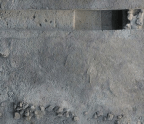
The southern tip of South America is a region of extreme landscapes, where towering granite peaks and glacial ice caps give way to grasslands that fade into the ocean. Small huemul deer weave through stands of beech that are permanently bent sideways by the same powerful winds that lift Andean condors toward the clouds. Giant rheas, large flightless birds similar to ostriches, dart across the open steppe, past herds of grazing guanaco, a wild llama, which nervously keep their noses to the wind, on the alert for prowling pumas. This vast region is known as Patagonia, and it encompasses the bottom quarter of South America, covering more than 400,000 square miles of Chile and Argentina. It extends 1,300 miles from the thirty-seventh parallel south to the tip of Cape Horn, roughly equal to the distance between Maine and southern Florida. Known for some of the most severe landscapes, strongest winds, and most extreme weather in the world, Patagonia was one of the last places on Earth to be settled by humans, and archaeologists are now discovering an intriguing story about the skills, adaptations, and resilience it took for people to survive there. Archaeologist César Méndez of the Center for the Investigation of Patagonian Ecosystems notes that learning about the area’s ancient people is particularly important because it was one of the only major regions in the world that was inhabited solely by hunter-gatherer groups until the arrival of Europeans. “Archaeology here can be viewed as a natural laboratory to observe the variability of mobile lifeways across time and space,” he says.
The precise origins of the name Patagonia are uncertain, but it may have derived from a Spanish word for leg or foot, , which the explorer Ferdinand Magellan is said to have used to refer to the local Tehuelche people whenprovides the only way to reveal the region’s long human story.






